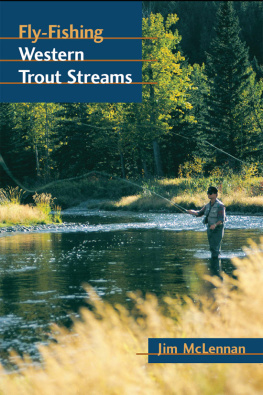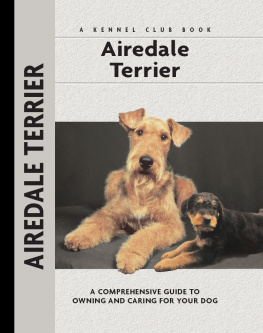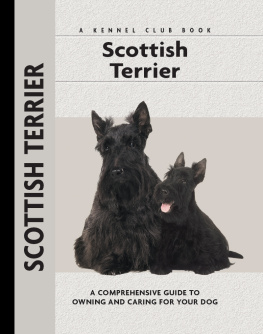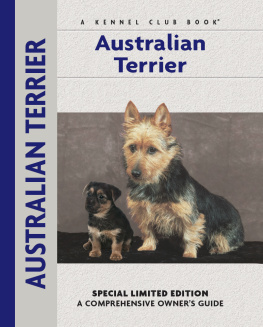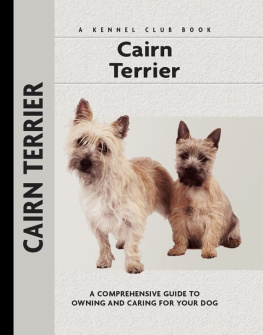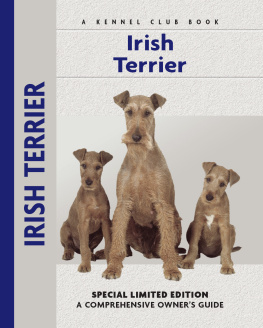Physical Characteristics of the Kerry Blue Terrier
(from the American Kennel Club breed standard)
Skull: Flat, with very slight stop, of but moderate breadth between the ears, and narrowing very slightly to the eyes.
Head: Long, but not exaggerated, and in good proportion to the rest of the body.
Eyes: Dark, small, not prominent, well placed and with a keen terrier expression.

Ears: Of moderate thickness, carried forward close to the cheeks.
Neck: Clean and moderately long, gradually widening to the shoulders.
Nose: Black, nostrils large and wide.
Cheeks: Clean and level, free from bumpiness.
Jaws: Deep, strong and muscular.
Chest: Deep and of but moderate breadth.
Forequarters: Shoulders fine, long and sloping, well laid back and well knit. The forelegs should be straight from both front and side view. The pasterns short, straight and hardly noticeable. Feet should be strong, compact, fairly round and moderately small.
Back: Short, strong and straight.
Loin: Short and powerful.
Tail: Set on high, of moderate length and carried gaily erect.
Coat: Soft, dense and wavy.
Color: The correct mature color is any shade of blue gray or gray blue from the deep slate to light blue gray, of a fairly uniform color throughout except that distinctly darker to black parts may appear on the muzzle, head, ears, tail and feet.
Hindquarters: Strong and muscular with full freedom of action, the thighs long and powerful, stifles well bent, hocks near the ground and upright and parallel with each other. Feet as in front.
Size: A height of 1819.5 inches for a dog, and 17.519 inches for a bitch, should be given primary preference.
Contents

Explore the theories regarding the origin of the breed known as the Irish Blue in its native land, meet the working terriers of Ireland, learn about the people instrumental in the breeds development and follow the Kerry Blue as he becomes a much-loved pet, show and working dog in many countries around the world.
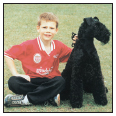
Are you and your family ready to say failte to Irelands magnificent blue terrier? Discover the personality of this upstanding canine citizen and explore all angles of owning an active, intelligent terrier to decide if the Kerry Blue is the breed for you. Also discuss physical characteristics and breed-specific health considerations.
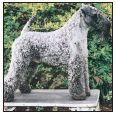
Learn the requirements of a well-bred Kerry Blue Terrier by studying the description of the breed set forth in the American Kennel Club standard. Both show dogs and pets must possess key characteristics as outlined in the breed standard.
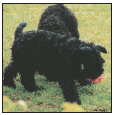
Find out about how to locate a well-bred Kerry Blue Terrier puppy. Discover which questions to ask the breeder and what to expect when visiting the litter. Prepare for your puppy-accessory shopping spree. Also discussed are home safety, the first trip to the vet, socialization and solving basic puppy problems.
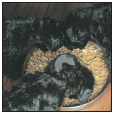
Cover the specifics of taking care of your Kerry Blue Terrier every day: feeding for all life stages, grooming and exercise needs for your dog. Also discussed are the essentials of dog identification and traveling safely with your Kerry Blue Terrier.
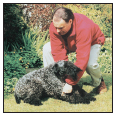
Begin with the basics of training the puppy and adult dog. Learn the principles of house-training the Kerry Blue Terrier, including the use of crates and basic scent instincts. Enter Puppy Kindergarten and introduce the pup to his collar and leash, and progress to the basic commands. Find out about obedience classes and other activities.
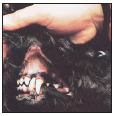
By Lowell Ackerman DVM, DACVD
Become your dogs healthcare advocate and a well-educated canine keeper. Select a skilled and able veterinarian. Discuss pet insurance, vaccinations and infectious diseases, the neuter/spay decision and a sensible, effective plan for parasite control, including fleas, ticks and worms.
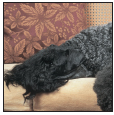
Know when to consider your Kerry Blue Terrier a senior and what special needs he will have. Learn to recognize the signs of aging in terms of physical and behavioral traits and what your vet can do to optimize your dogs golden years.

Step into the center ring and find out about the world of showing pure-bred dogs. Heres the basics of how to get started in AKC shows and how shows are organized. Discover the many titles available to dogs in all venues of canine competition.
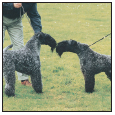
Analyze the canine mind to understand what makes your Kerry Blue Terrier tick. Among the potential problems discussed are aggression (fear-biting, inter-canine and dominant aggression), separation anxiety, sex-related issues, chewing, digging and food-related problems.
K ENNEL C LUB B OOKS K ERRY B LUE T ERRIER
ISBN 13: 978-1-59378-321-1
eISBN 13: 978-1-62187-016-6
Copyright 2005 Kennel Club Books An Imprint of I-5 Press A Division of I-5 Publishing, LLC
3 Burroughs, Irvine, CA 92618 USA
Cover Design Patented: US 6,435,559 B2 Printed in South Korea
All rights reserved. No part of this book may be reproduced in any form, by photostat, scanner, microfilm, xerography or any other means, or incorporated into any information retrieval system, electronic or mechanical, without the written permission of the copyright owner.
10 9 8 7 6 5 4 3 2 1
Photography by
John Ashbey, Paulette Braun, T.J. Calhoun, Alan and Sandy Carey, Tom DiGiacomo, Lisa Croft Elliot, Isabelle Franais, Rob Gerity, JC Photo, Carol Ann Johnson, Bill Jonas, Klein Photography, Perry Phillips, Chuck & Sandy Tatham, Michael Trafford and Alice van Kempen.
Illustrations by Patricia Peters.
The publisher wishes to thank all of the owners whose dogs are featured in this book, especially Larry and Carol Brown, William and Carol Kearney and Gene Possidento.

Next page

